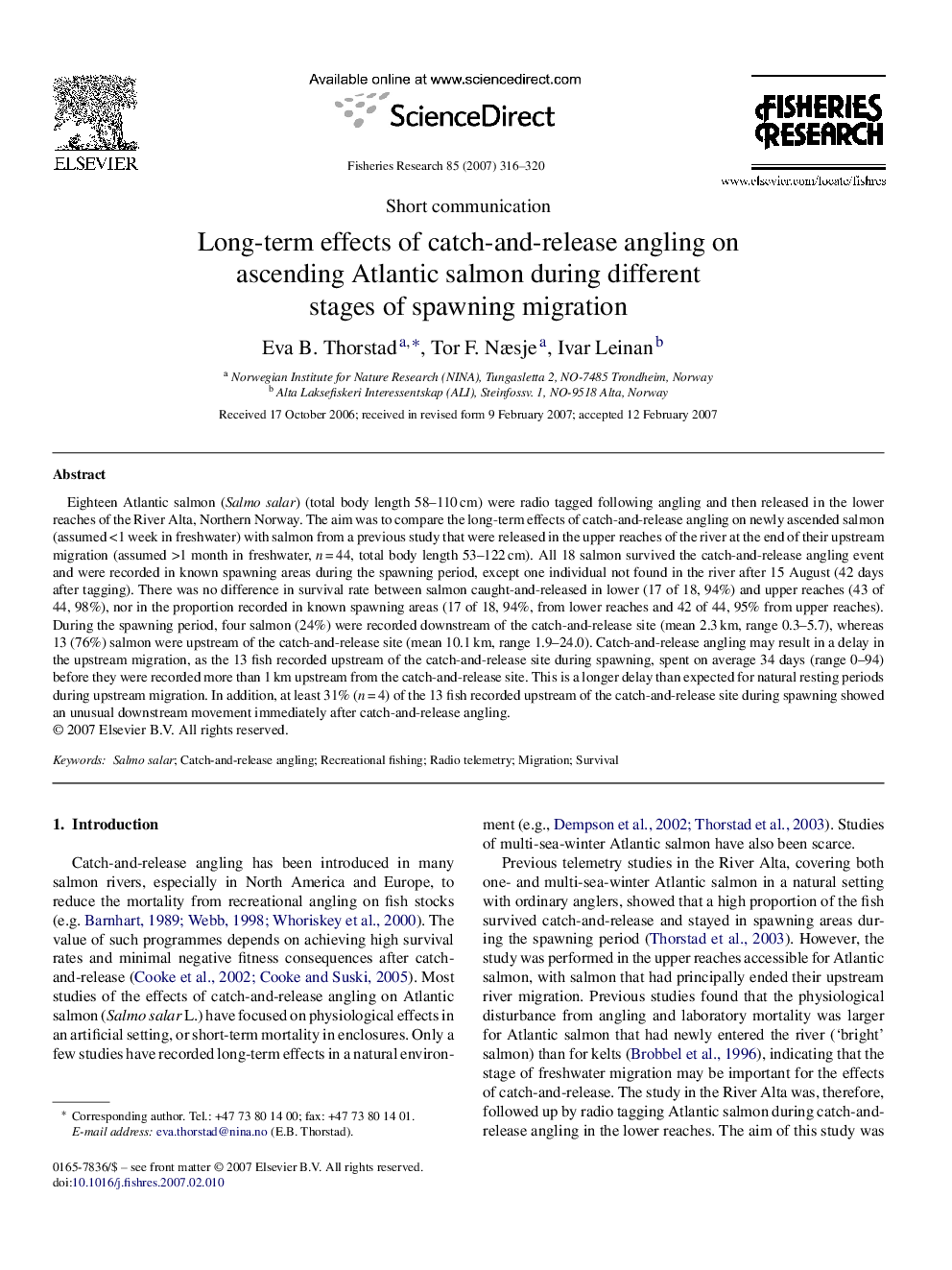| کد مقاله | کد نشریه | سال انتشار | مقاله انگلیسی | نسخه تمام متن |
|---|---|---|---|---|
| 4544694 | 1327208 | 2007 | 5 صفحه PDF | دانلود رایگان |

Eighteen Atlantic salmon (Salmo salar) (total body length 58–110 cm) were radio tagged following angling and then released in the lower reaches of the River Alta, Northern Norway. The aim was to compare the long-term effects of catch-and-release angling on newly ascended salmon (assumed <1 week in freshwater) with salmon from a previous study that were released in the upper reaches of the river at the end of their upstream migration (assumed >1 month in freshwater, n = 44, total body length 53–122 cm). All 18 salmon survived the catch-and-release angling event and were recorded in known spawning areas during the spawning period, except one individual not found in the river after 15 August (42 days after tagging). There was no difference in survival rate between salmon caught-and-released in lower (17 of 18, 94%) and upper reaches (43 of 44, 98%), nor in the proportion recorded in known spawning areas (17 of 18, 94%, from lower reaches and 42 of 44, 95% from upper reaches). During the spawning period, four salmon (24%) were recorded downstream of the catch-and-release site (mean 2.3 km, range 0.3–5.7), whereas 13 (76%) salmon were upstream of the catch-and-release site (mean 10.1 km, range 1.9–24.0). Catch-and-release angling may result in a delay in the upstream migration, as the 13 fish recorded upstream of the catch-and-release site during spawning, spent on average 34 days (range 0–94) before they were recorded more than 1 km upstream from the catch-and-release site. This is a longer delay than expected for natural resting periods during upstream migration. In addition, at least 31% (n = 4) of the 13 fish recorded upstream of the catch-and-release site during spawning showed an unusual downstream movement immediately after catch-and-release angling.
Journal: Fisheries Research - Volume 85, Issue 3, July 2007, Pages 316–320